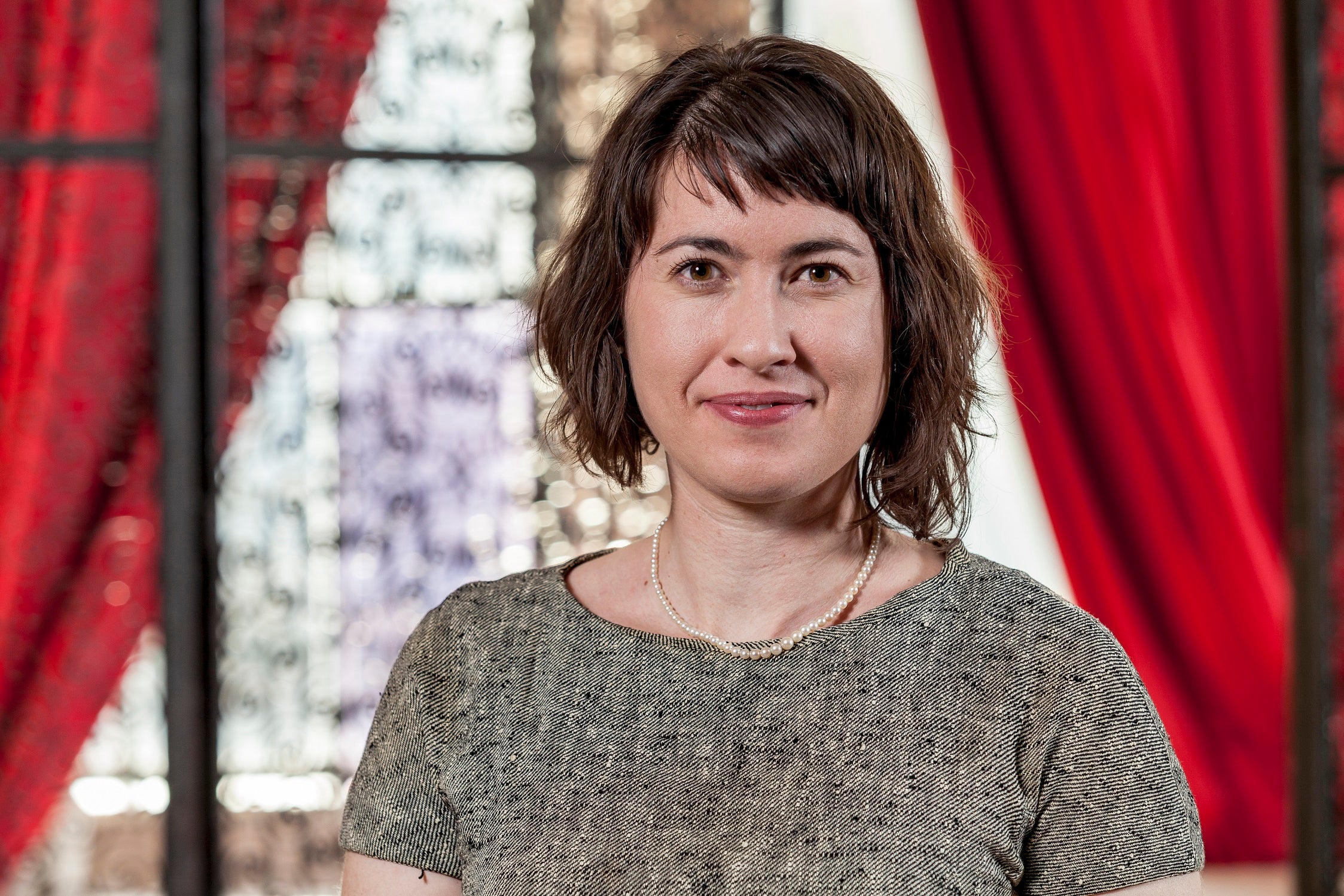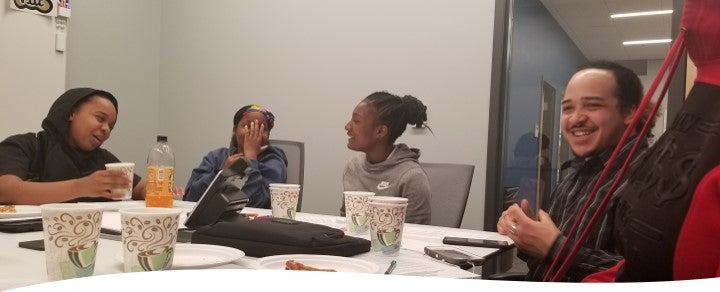 Dr. Jaime Booth’s research engages youth and leverages new technology to understand and address the complex role of contexts in Black adolescents’ well-being. Booth’s work focuses on understanding how neighborhoods and activity spaces contribute to stress and subsequent health disparities and finding ways to create more supportive spaces for youth. “My interest in looking at neighborhoods to understand and address health disparities came from a desire to intervene at a more structural level,” she explains, underscoring the importance of focusing on systemic drivers when considering the disparities we observe.
Dr. Jaime Booth’s research engages youth and leverages new technology to understand and address the complex role of contexts in Black adolescents’ well-being. Booth’s work focuses on understanding how neighborhoods and activity spaces contribute to stress and subsequent health disparities and finding ways to create more supportive spaces for youth. “My interest in looking at neighborhoods to understand and address health disparities came from a desire to intervene at a more structural level,” she explains, underscoring the importance of focusing on systemic drivers when considering the disparities we observe.
Across multiple research projects, her work engages youth as research partners. Reflecting on the role of the Youth Research Advisory Board (YRAB) in The SPIN Project, a National Institute on Drug Abuse (NIDA) funded project that explores how neighborhood activity spaces affect youth mental health, stress, and substance use, she shared, “the perspective [youth] bring to the work moves it and shapes it in important ways that I could not possibly without them.” She went on to explain, “The SPIN Project’s Youth Research Advisory Board (YRAB) was critical to making a lot of implementation and methodological decisions.” The YRAB met with Booth once a week for four years starting in 2018 to discuss all aspects of the study, including measures, branding, recruitment and retention, and data analysis. In a 2023 PublicSource article, two members of the Youth Research Advisory Board, Ny’Ela and Ny’Jai Chapman, emphasized the importance of centering youth voices, stating “as adolescents growing into adults, our voices are not often heard; they are more pushed to t he side. Even though adults feel like their voices are more important than youths, our voices are just as significant because we are the next generation.” Using ecological momentary assessments conducted through an app on cell phones, Booth and her team examine the day-to-day realities of young people living in historically segregated and under-resourced neighborhoods. “We found that both stressful and supportive spaces exist in historically under-resourced neighborhoods and Black youths’ interaction with these spaces have an impact on their overall stress levels and the likelihood that they will use marijuana to cope” Booth explains. The findings emphasize the need to address systemic racism and violence in activity spaces while increasing access to supportive environments. These findings, Booth argues, challenge traditional approaches to substance abuse prevention by focusing on changing environments to support youth rather than solely asking individuals to make different choices.
he side. Even though adults feel like their voices are more important than youths, our voices are just as significant because we are the next generation.” Using ecological momentary assessments conducted through an app on cell phones, Booth and her team examine the day-to-day realities of young people living in historically segregated and under-resourced neighborhoods. “We found that both stressful and supportive spaces exist in historically under-resourced neighborhoods and Black youths’ interaction with these spaces have an impact on their overall stress levels and the likelihood that they will use marijuana to cope” Booth explains. The findings emphasize the need to address systemic racism and violence in activity spaces while increasing access to supportive environments. These findings, Booth argues, challenge traditional approaches to substance abuse prevention by focusing on changing environments to support youth rather than solely asking individuals to make different choices.
Booth’s interest in employing new technology in her research is driven by the desire to overcome the limitations of traditional data collection methods used in neighborhood research, which can be costly and static. This has led her to explore the use of tools like social media platforms, mobile ecological momentary assessments that employ virtual geo-fences, and to partner with researchers in information science to co-design mobile and web-based tools to engage youth in neighborhood change. Her data advocacy project, funded by the National Science Foundation (NSF), involves co-designing a web-based platform to help youth learn data literacy by analyzing big data for advocacy and community change. Through interactive roles and curricula, participants learn to identify patterns, understand root causes, and design advocacy campaigns. Reflecting on this project, Booth stated, “In this project, when designing in partnership with the youth, we have found that the data that they work with is really important for engagement. It has to be data that they can place themselves within, that they can resonate with”. By co-designing tools with youths and using data that is immediately relevant to them, youth in the project engaged intuitively in learning data literacy and developing advocacy messages on issues that are important to them.
Booth’s collaboration with youth and use of technology in her work has led to research that illuminates and aligns with Black youths lived experiences. She highlights how this connection has been dynamic, with youth participants expressing newfound confidence in engaging in research and advocating for systemic change. Through her youth-engaged approach that leverages technology, Booth seeks to work with youth to build evidence for a systemic approach to health promotion and youth-driven approaches to building increased access to supportive spaces in their neighborhood.